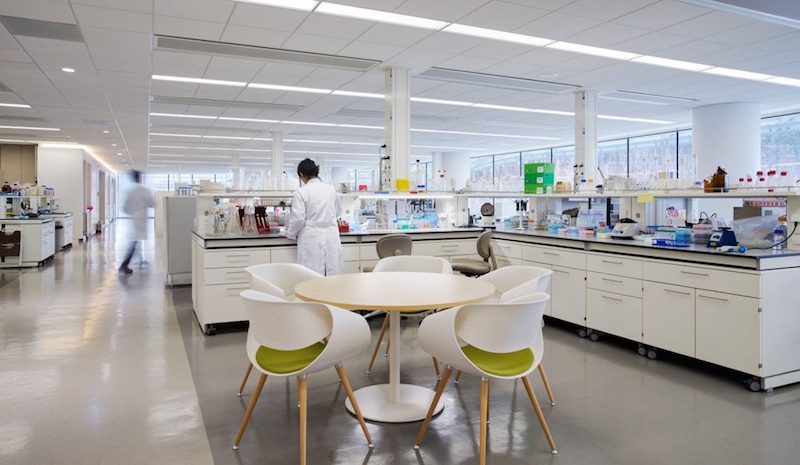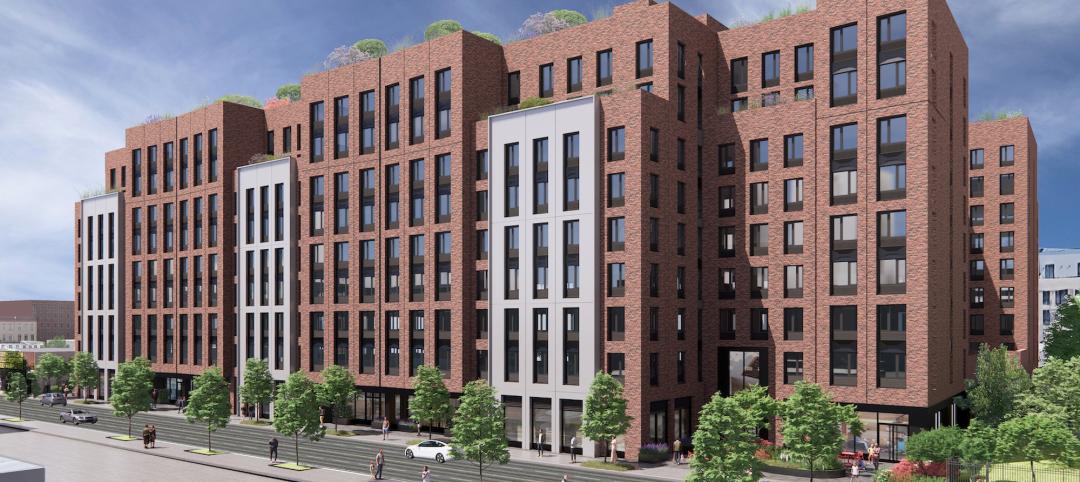If most business leaders recognize the inherent link between workplace design strategy and company culture, few deeply understand the reciprocal relationship that exists between the two. Far too often, company leaders view the workplace as a container that responds to existing culture and not a change agent to inspire culture change. Those with this viewpoint have a limited perspective on how workplace change can alter the course of their business and spur new success.
In truth, the relationship between workplace design and company culture isn’t all that different from a tango. When leveraged correctly, one can lead the other and vice versa to move the company forward. While workplace design should take cues from existing culture, it should also serve as a tool to transform entrepreneurship, innovation, collaboration, transparency, learning, engagement and other culture realities in an organization. Companies should embrace workplace design changes as a bridge tool that can move their culture from where it is today, to where they want it to be tomorrow.

For example, a company unhappy with levels of entrepreneurship and innovation inside its company should not design spaces that simply respond to existing work styles. Instead, it needs to create entirely new types of spaces that challenge and reshape how their people work to spur multi-disciplinary thinking and higher levels of innovation.
Once companies understand the symbiotic relationship between workplace design and culture, they can take purposeful action via design knowing the impact it will have on their culture. This is a careful dance and anyone hoping to “Master the Tango” between the two, must commit to some fundamental steps and strategies to ensure success outlined below.
Understand Your People
Before embarking on workplace design change; every company should understand and align on their employees’ current realities and the business goals for the future before they can develop a successful strategy. Without this foundational knowledge, companies are ill-equipped to define the where, what and how of their workplace. Workplace change occurs to help companies achieve their organizational goals and any ambiguity or misalignment will lead to inefficient decision-making and potential roadblocks. Organizations with articulated goals can ensure every workplace decision they make is in line with their broader long-term objectives.

Accelerating discovery and R&D innovation can be a key goal of workplace design like at CJ Blossom Park.
Establishing a baseline around the needs, wants and hopes for future workplace investments requires input and buy-in from the end users — leadership, employees and consumers. Through individual meetings, focus groups, town hall sessions, surveys, workplace simulations and other prevalent feedback communication tools, companies should ideally engage stakeholders regularly before finalizing and implementing workplace changes. Reliable 2-way feedback loops will reinforce the validity and strength of both the design changes themselves and adoption.
Establish Measurable Goals
Data is an incredible advantage today’s companies have at their disposal that their predecessors lacked. While many companies may not yet fully leverage it, there is a deliberate science to developing measurable goals for workplace culture change. Be it a percentage increase in employee satisfaction across all generations in the workplace or a doubling of internal startup teams — today’s companies can leverage data to ensure their workplace design investments deliver ROI.

Zurich North America’s HQ outside Chicago is rooted in one of the most expansive employee engagement efforts in history, and the extensive data it generated.
Used strategically, data can help companies understand how employees work today, their organizational networks and adjacencies, space utilization rates, demographic preferences and how satisfied different groups are with the workplace. With baselines established and goals set, companies can invest more confidently and better evaluate success throughout the transition. The future demands effective workplaces that are regularly monitored, measured, recalibrated and re-evaluated as organizations strive for elite performance and experiences.
Marry Policy with Workplace Design Strategy
Once an organization has a thorough understanding of its people, business goals and the culture changes it hopes to realize via workplace design, it must also consider how it all relates to existing company policies. One of the leading tripwires for successful implementation is disconnects between workplace strategy and work or talent policies.
For instance, with the increase in desk sharing and co-working, companies have to evaluate their flexibility and mobility policies. This, in turn, must be coordinated with potential investments in mobile technology and security policies that address concerns associated with the use of mobile devices. A related example may include exploring how performance management metrics might change from traditional time-based utilization metrics to an outcomes-based measure.
With the move to open offices, companies will need to revisit some of their work practices like scheduling of meeting rooms, use of collaboration tools or digitization. They will need to develop relevant guidelines that help their employees understand and adopt new protocols. All new policy, process or practice changes should be paired with programs to change behaviors and the organization’s culture to ensure successful implementation.
Invest in Change Management
While it is widely acknowledged that organizational change management is vital to any transformation, many companies are still guilty of relegating it to the back burner until later in the process. This is especially true in real estate where design and transition activities can stretch across years. Engaging the organization sooner rather than later helps companies reap the benefits of their investments and results in higher employee satisfaction and productivity. Employees require time and coaching to adopt new behaviors that respond to a new workplace’s benefits and advantages. For example, a company may open a new office with leading-edge technology that eliminates the need for paper filing. However, until employees understand the new tools and feel comfortable using them, paper may still fill the office.

Many organizations use a new workplace to shape and redefine their company culture. Specifically, the workplace strategy could be geared towards making teams more collaborative, innovative or instilling a culture of well-being. These transformations require a deeper insight into pockets of current behaviors and drivers of desired behaviors. An informed, data-driven culture transformation relies on coordinated interventions that address change holistically.
Investing in change management can accelerate this learning curve. Successful change management programs should begin early and encompass cultural and behavioral change in addition to employee engagement and training.
Workplaces can do more than just house existing culture — they should foster exciting culture change for companies of all type and scale. Emerging tools and research practices empower companies with more resources than ever before to leverage workplace design to influence culture change. It’s not an easy “tango” to master, but when executed properly it can help companies dance toward new levels of success.
More from Author
CannonDesign | Sep 20, 2024
The growing moral responsibility of designing for shade
Elliot Glassman, AIA, NCARB, LEED AP BD+C, CPHD, Building Performance Leader, CannonDesign, makes the argument for architects to consider better shade solutions through these four strategies.
CannonDesign | Jan 3, 2024
Designing better built environments for a neurodiverse world
For most of human history, design has mostly considered “typical users” who are fully able-bodied without clinical or emotional disabilities. The problem with this approach is that it offers a limited perspective on how space can positively or negatively influence someone based on their physical, mental, and sensory abilities.
CannonDesign | Oct 23, 2023
Former munitions plant reimagined as net-zero federal workplace
The General Services Administration (GSA) has embraced adaptive reuse with Building 48, an exciting workplace project that sets new precedents for how the federal government will approach sustainable design.
CannonDesign | Aug 22, 2023
How boldly uniting divergent disciplines boosts students’ career viability
CannonDesign's Charles Smith and Patricia Bou argue that spaces designed for interdisciplinary learning will help fuel a strong, resilient generation of students in an ever-changing economy.
CannonDesign | Jul 10, 2023
The latest pediatric design solutions for our tiniest patients
Pediatric design leaders Julia Jude and Kristie Alexander share several of CannonDesign's latest pediatric projects.
CannonDesign | May 11, 2023
Let's build toward a circular economy
Eric Corey Freed, Director of Sustainability, CannonDesign, discusses the values of well-designed, regenerative buildings.
CannonDesign | Apr 10, 2023
4 ways designers can help chief heat officers reduce climate change risks
Eric Corey Freed, Director of Sustainability, CannonDesign, shares how established designers and recently-emerged chief heat officers (CHO) can collaborate on solutions for alleviating climate change risks.
CannonDesign | Mar 9, 2023
5 laboratory design choices that accelerate scientific discovery
Stephen Blair, director of CannonDesign's Science & Technology Practice, identifies five important design strategies to make the most out of our research laboratories.
CannonDesign | Feb 9, 2023
3 ways building design can elevate bold thinking and entrepreneurial cultures
Mehrdad Yazdani of CannonDesign shares how the visionary design of a University of Utah building can be applied to other building types.
CannonDesign | Jan 9, 2023
How modular solutions can help address skyrocketing construction costs
Modular builder Joshua Mensinger details three ways modular solutions aid in lowering construction costs.
















